- Google Docs has an in-built word count tool that lets you check the total number of words as well as words in a specific portion.
- To use it on Google Docs website, hit the Ctrl+Shift+C keyboard shortcut to summon the Word count panel.
- On your Android or iPhone, when inside a Google Docs document, go to 3-dots icon > Word count.
If you are a writer like me who often ends up staring into the daunting white void of a Google Docs canvas, this guide is probably for you. And, if you succumb to the pressure of maintaining a specific word count target as well, this is definitely for you. Thankfully, there’s an integrated word count meter that makes it easier to track. Here’s how you can check your word count on Google Docs.
How to Check Total Word Count in Google Docs
You can check the total word count of your document on Google Docs via both your web browser and the dedicated mobile app for Android and iPhone. So, I have outlined the steps for both. With that out of the way, here’s a quick rundown of it all:
Method 1: Check Word Count on Google Docs App (Android and iPhone)
Since the Google Docs app interface is similar on both iPhone and Android, I used an Android device to showcase the steps.
- Launch the Google Docs app and open a document.
- Tap on the 3-dots icon at the top right and select Word count.
- You should see the number of Words, Characters, and Characters excluding spaces.
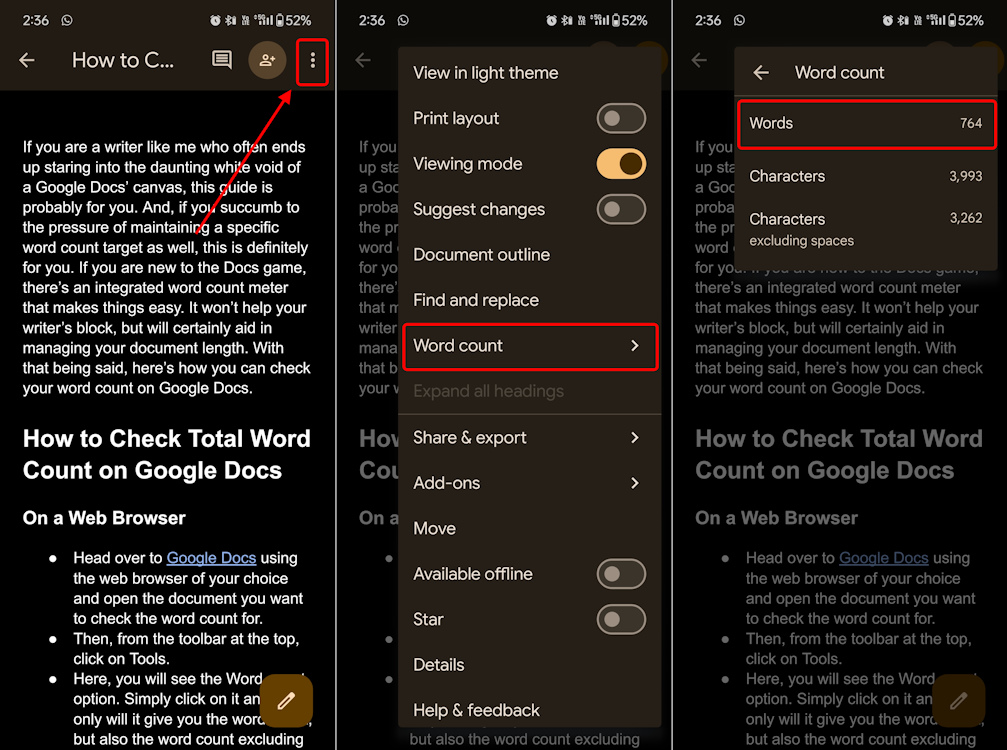
Method 2: Check Total Word Count on Google Docs Website
You can also check the word count in a document using the Google Docs website. Here’s how to do it.
- Go to Google Docs (website) and open a document.
- From the top toolbar, click on the Tools tab.
- Then select Word count to see the word count.
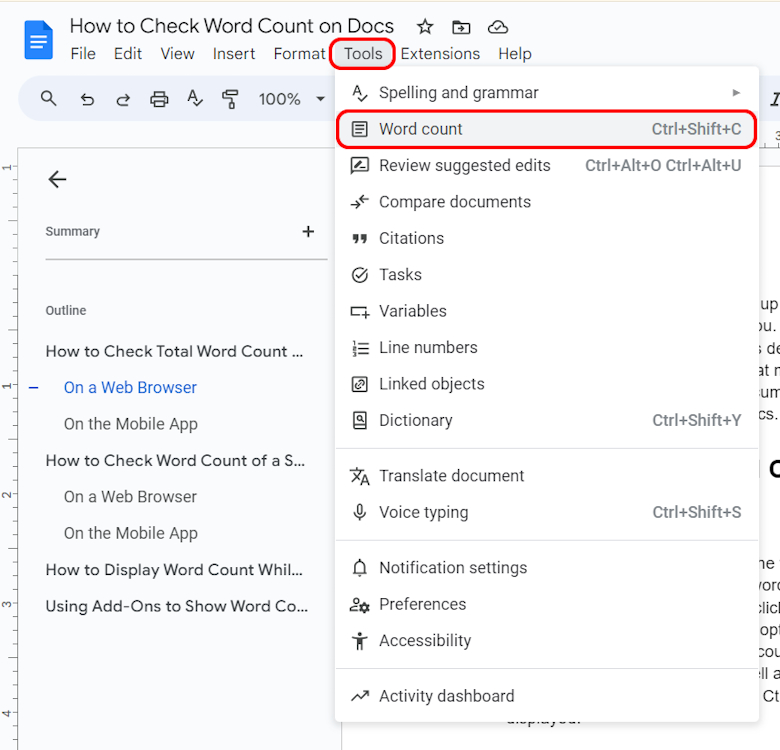
- It will show you the word count excluding spaces, the number of pages, and characters.
- Alternatively, you can also use the Ctrl+Shift+C keyboard shortcut to see the word count.
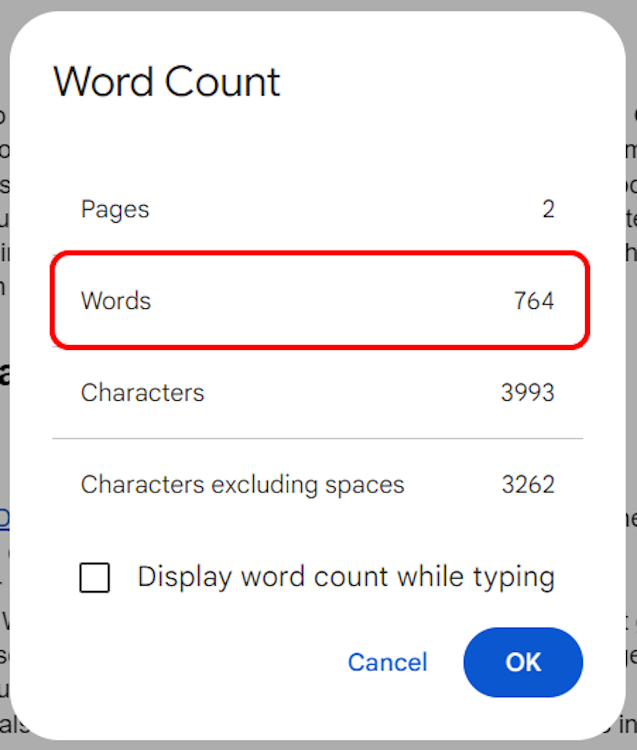
How to Check Word Count of Specific Portion on Google Docs
You can check the word count for a specific portion of your Google Docs document on both a web browser and the mobile app. Here’s how:
Method 1: Using Google Docs App on Android and iPhone
You can check the following steps to view the word count for a specific portion of text inside a document on the Google Docs app.
- Launch Google Docs and select a portion of the document by long-pressing.
- Tap on the 3-dots icon and select Word count.
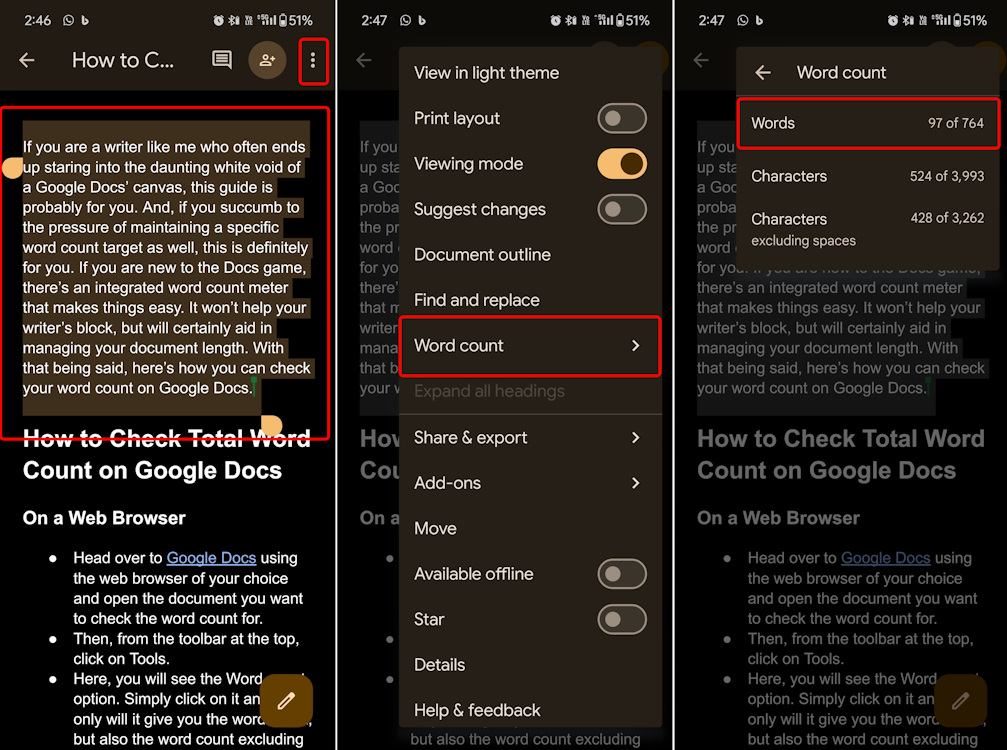
This will show you the word count of the part of the document you’ve selected.
Method 2: Check Word Count of Specific Portion on Google Docs Website
Here’s how you can determine the word count for specific text portions inside a document using Google Docs website.
- Open a document inside Google Docs (website) and use the cursor to highlight the portion.
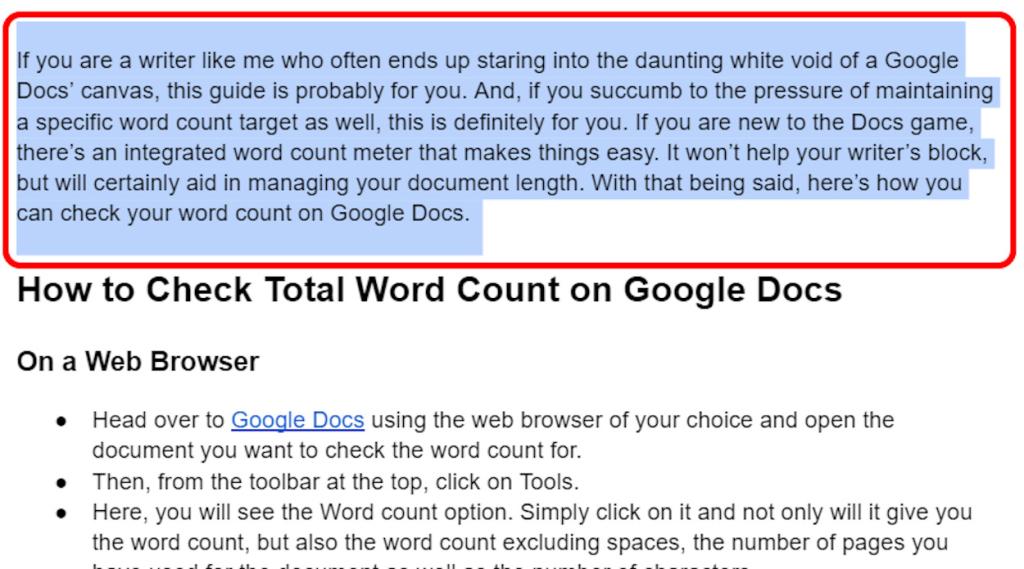
- Head over to Tools > Word count or use the Ctrl+Shift+C keyboard shortcut.
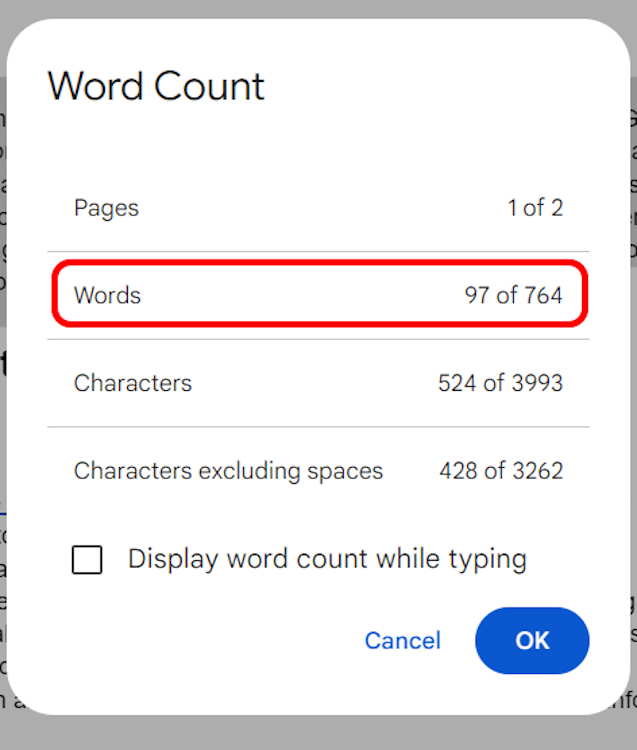
The word count panel will now display the word count only for the portions you’ve selected.
How to Display Live Word Count When Writing in Google Docs
To display the word count of your document while typing, you will need to use the web version of Google Docs. In the toolbar, go to Tools > Word count, check the Display word count while typing checkbox, and then click on OK.

You should then see a live word count in the bottom left corner of your document. Clicking on the same will reveal additional information about the page count, character count, character count excluding spaces, and an option to hide this word count panel.

How to Use Google Docs Add-ons to View Word Count
While the integrated word count feature of Google Docs is decent, it’s as basic as it gets. If you need more features, there’s a great Add-On called just like Chrome extensions called Word Counter Max. It comes with features that you’d appreciate. Also, Docs add-ons are only available on Google Docs web.
- Head over to Google Docs and click on the Extensions tab from the top toolbar.
- Hover your cursor over the Add-ons panel and click on Get add-ons.

- In the Google Workspace Marketplace window, click on the search bar at the top and type Word Counter Max.
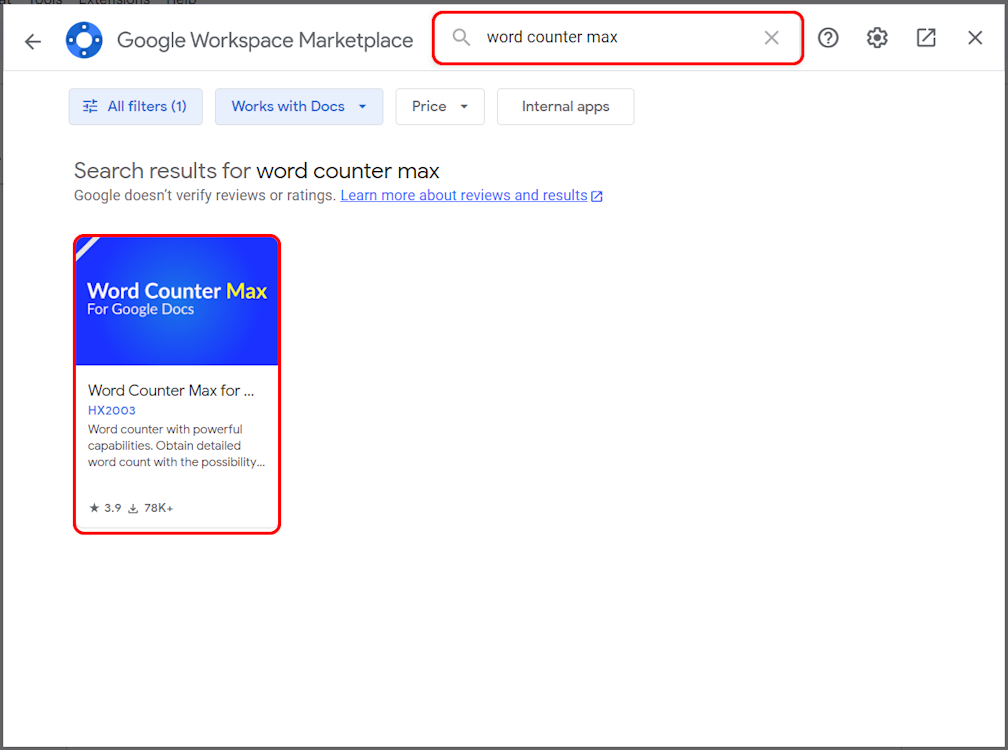
- Then, click on the search result that shows up and hit the Install button.
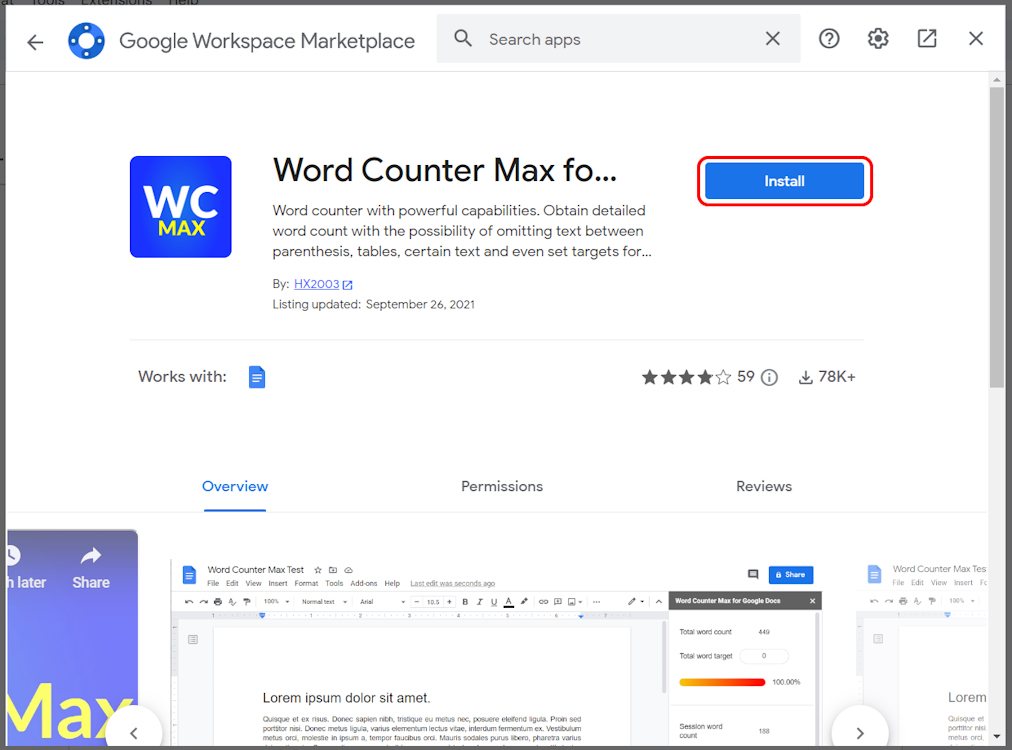
- Next, you will see a small pop-up window, where you will need to hit Continue.

- You will be prompted to select the Google account you want to install the add-on for. Once you choose and give the add-on the required permissions, it will be installed.
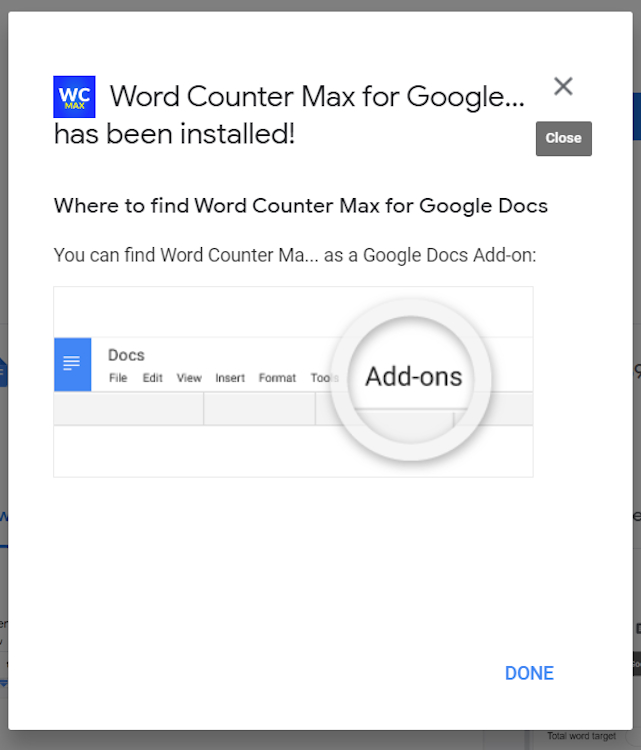
- Go back to the document > Extensions > find Word Counter Max.
- Hover your cursor over it and click View (Full). This allows you to see the more advanced info.

- That should immediately display the tool in a convenient panel on the right, that shows up like this:
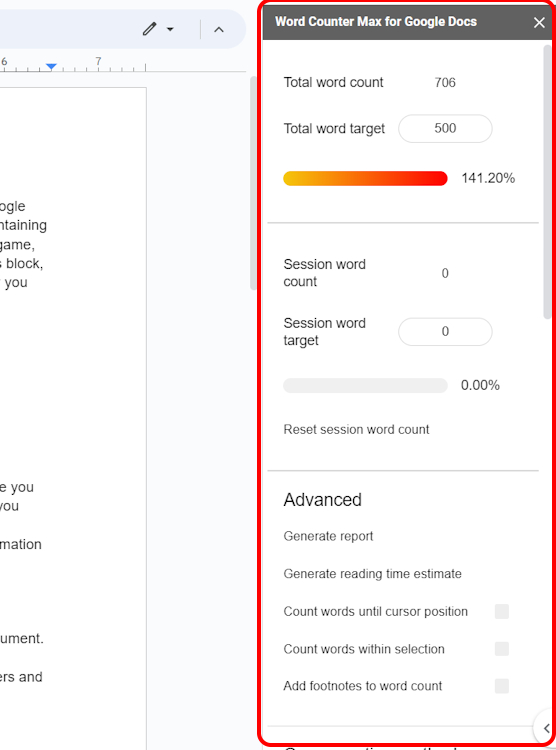
After installing the extension, I was no longer anxious about going over my target word count. The tool was fixed in the right panel of my Docs document and I had a target set. Now, as I typed away, the tool showed me how much of the target word count I was done with.
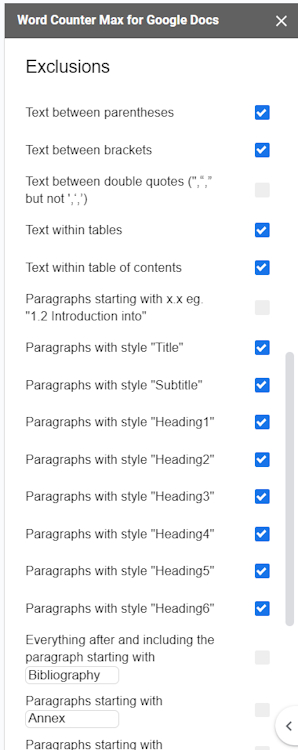
In addition, you can also make a lot of other exclusions from your document. This came in very handy for me as I could exclude the sub-headings and table of contents in my document from being displayed in the word count meter.
In the same way, you can make it exclude paragraphs that start with a specific word, and so on. If you want to go above and beyond the integrated word count meter in Docs, this is one tool I’d highly recommend. If you have any additional queries, do let me know in the comments below!






